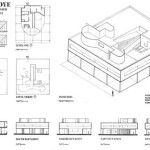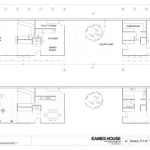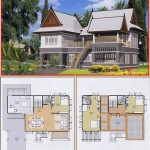Simply Homes Floor Plans: A Comprehensive Guide
Simply Homes offers a range of floor plans designed to cater to diverse homeowner needs and preferences. Understanding the nuances of these plans is crucial for prospective buyers seeking to make an informed decision about their future residence. This article provides an in-depth exploration of Simply Homes floor plans, covering key considerations and factors that influence the selection process.
The availability of various floor plan options is a significant draw for potential homeowners. Simply Homes recognizes this and aims to provide designs that accommodate single individuals, growing families, and retirees alike. The company invests in architectural expertise and market research to ensure its floor plans are not only aesthetically pleasing but also functionally efficient.
One of the primary considerations when reviewing Simply Homes floor plans is the intended use of the space. This involves assessing lifestyle needs, family dynamics, and long-term plans. A young couple, for instance, might prioritize open-concept living areas and a well-appointed kitchen for entertaining, while a family with young children might focus on dedicated play areas and easily accessible storage solutions. The choice of a floor plan must reflect these individual priorities.
Another vital aspect is understanding the square footage of each floor plan. Simply Homes typically provides detailed specifications regarding the total area, as well as the dimensions of individual rooms. This information allows potential buyers to visualize the space and determine if it meets their requirements. Moreover, understanding the layout and flow of the floor plan is essential to ensure that the home feels comfortable and navigable.
Understanding Key Floor Plan Features
Simply Homes floor plans incorporate a variety of features, each designed to enhance the living experience. These features can be broadly categorized as structural elements, functional spaces, and aesthetic details. Structural elements include the foundation type, wall construction, and roof design. These components contribute to the overall durability and stability of the home. Functional spaces encompass bedrooms, bathrooms, kitchens, living areas, and utility rooms. The arrangement and size of these spaces dictate how efficiently the home can be used. Aesthetic details refer to the design elements that contribute to the visual appeal of the home, such as window styles, trim work, and flooring options.
The placement of bedrooms is a significant factor in many floor plans. Master suites are often situated away from secondary bedrooms to provide privacy and tranquility. The inclusion of walk-in closets and en-suite bathrooms in the master suite is a common feature. Secondary bedrooms may be grouped together or dispersed throughout the home, depending on the overall design. The size and configuration of these bedrooms should be carefully considered to ensure they meet the needs of the occupants.
The kitchen is often considered the heart of the home, and Simply Homes floor plans reflect this importance. Kitchen designs range from compact and efficient layouts to expansive gourmet kitchens with ample counter space and storage. The inclusion of islands, breakfast bars, and walk-in pantries is common in larger floor plans. The placement of the kitchen in relation to other living areas is also a crucial consideration. Some floor plans feature open-concept kitchens that seamlessly flow into the living room and dining area, while others offer more traditional, separated kitchen spaces.
Bathroom design is another important aspect of Simply Homes floor plans. The number of bathrooms and their configuration vary depending on the size and layout of the home. A master bathroom typically includes a shower, bathtub, and vanity, while secondary bathrooms may offer a shower/tub combination. The inclusion of powder rooms near the main living areas is also a common feature. Consider the accessibility and functionality of the bathroom layouts to ensure they meet the needs of all occupants.
Living areas are designed to provide comfortable spaces for relaxation and entertainment. These areas may include living rooms, family rooms, and great rooms. Simply Homes floor plans often incorporate features such as fireplaces, built-in shelving, and large windows to enhance the ambiance of these spaces. The size and configuration of the living areas should be carefully considered to ensure they can accommodate furniture and activities.
Utility rooms, such as laundry rooms and mudrooms, are essential for maintaining organization and cleanliness in the home. Simply Homes floor plans often include dedicated spaces for these functions. Laundry rooms may be located near the bedrooms for convenience, while mudrooms are typically situated near entryways to capture dirt and debris. The inclusion of storage options in these spaces is also a valuable feature.
Analyzing Different Floor Plan Styles
Simply Homes offers a variety of floor plan styles to cater to different aesthetic preferences. These styles can range from traditional and classic designs to modern and contemporary layouts. Understanding the characteristics of each style is essential for selecting a floor plan that aligns with personal tastes.
Traditional floor plans often feature a more formal layout with clearly defined rooms. These plans may include features such as separate living and dining rooms, formal entryways, and intricate trim work. Traditional designs typically emphasize symmetry and balance. The color palettes and material choices often reflect a timeless and elegant aesthetic.
Modern floor plans, on the other hand, tend to embrace open-concept living and clean lines. These plans may feature large windows, minimalist design elements, and a focus on functionality. Modern designs typically prioritize natural light and a seamless flow between indoor and outdoor spaces. The color palettes and material choices often reflect a contemporary and sophisticated aesthetic.
Ranch-style floor plans are characterized by their single-story design and sprawling layout. These plans are often favored by retirees and individuals with mobility issues. Ranch-style homes typically feature a low-pitched roof, attached garage, and a focus on outdoor living. The interior layout is often designed for ease of movement and accessibility.
Two-story floor plans offer the advantage of maximizing living space on a smaller footprint. These plans typically feature bedrooms and bathrooms on the upper level and living areas on the main level. Two-story homes often include a staircase as a prominent design element. The layout of two-story homes can be more complex than single-story homes, requiring careful consideration of traffic flow and accessibility.
Split-level floor plans are characterized by their staggered levels of living space. These plans offer a unique architectural design and can be well-suited for sloped lots. Split-level homes typically feature multiple staircases and distinct living zones. The layout of split-level homes can be challenging, requiring careful consideration of spatial planning and traffic flow.
Factors Influencing Floor Plan Selection
Several factors can influence the final selection of a Simply Homes floor plan. These factors include budget constraints, lot size, building codes, and personal preferences. A realistic budget is essential for narrowing down the options and ensuring affordability. Lot size limitations may restrict the types of floor plans that can be accommodated. Building codes dictate the minimum requirements for safety and construction. Personal preferences play a crucial role in determining the overall aesthetic and functionality of the home.
Budget considerations are paramount in the home-buying process. Simply Homes offers floor plans at various price points, allowing buyers to select a plan that aligns with their financial resources. It is important to factor in additional costs such as upgrades, landscaping, and closing costs when determining the overall budget. Consulting with a financial advisor can help ensure that the chosen floor plan is financially sustainable.
Lot size limitations can significantly impact the choice of floor plan. Narrow lots may require a vertical design, such as a two-story home, while wider lots may accommodate a ranch-style home. The orientation of the lot is also a crucial consideration. Ideally, the home should be positioned to maximize natural light and take advantage of any views. Understanding the zoning regulations and setback requirements for the lot is essential to ensure compliance with local ordinances.
Building codes dictate the minimum standards for construction and safety. Simply Homes floor plans are designed to meet or exceed these codes. However, it is important to verify that the chosen floor plan complies with all applicable local regulations. Building codes can vary depending on the municipality and may address issues such as energy efficiency, fire safety, and accessibility.
Personal preferences are ultimately the deciding factor in the floor plan selection process. Buyers should carefully consider their lifestyle needs, aesthetic tastes, and long-term goals when evaluating different options. Visiting model homes and reviewing virtual tours can provide valuable insights into the features and functionality of different floor plans. It is also helpful to consult with a real estate agent or interior designer to gain expert advice and guidance.

Est House Plans To Build Simple With Style Blog Eplans Com

Simple House Plans Blog Homeplans Com

And The Floor Plan Winner Is Simply Southern Cottage

Unique One Story House Plans Monster

Simple House Plans Blog Homeplans Com

Unique One Story House Plans Monster

House Plans Floor Blueprints

10 Small House Plans With Open Floor Blog Homeplans Com
10 Small House Plans With Open Floor Blog Homeplans Com

10 Small House Plans With Open Floor Blog Homeplans Com








